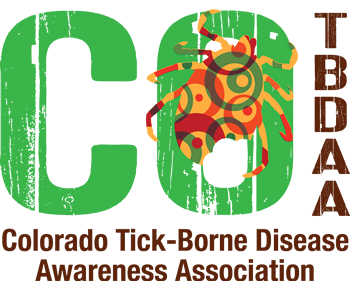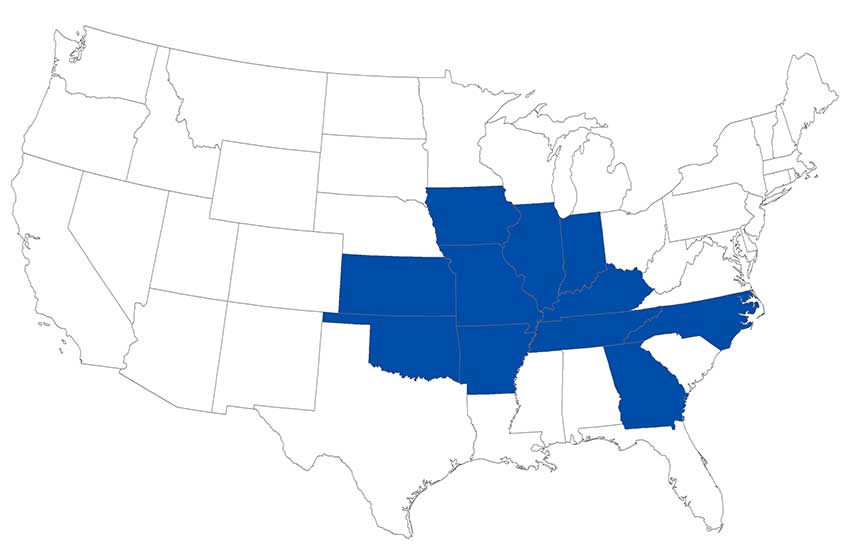
Heartland Virus
What is Heartland Virus?
Heartland virus (HRTV; family Bunyaviridae, genus Phlebovirus) is an emerging public health threat in the United States. Viruses in this family are found all over the world. Heartland virus is a novel phlebovirus that was recently discovered in Missouri in 2009. It is an RNA virus in the same genus as Rift Valley fever, Sandfly fever, Toscana, and Severe fever with thrombocytopenia syndrome (SFTS) viruses. Heartland virus has yet to be isolated from any wild or domestic animals, so the question of vertebrate reservoir(s) remains largely unanswered.
As of June 2020, more than 50 cases of Heartland virus disease have been reported from states in the Midwestern and southern United States. Studies suggest that Lone Star ticks may transmit the virus. In a recent study, deer, raccoon, coyotes, and moose have been found to be antibody positive for this disease. Thirteen states had seropositive animals: Florida, Georgia, Illinois, Indiana, Kansas, Kentucky, Maine, Missouri, New Hampshire, North Carolina, Tennessee, Texas, and Vermont. Within the 13 states, 20 geographic clusters of seropositive animals were mapped by plotting positive animals by the county where they were collected.
Is Heartland virus in Colorado?
Human infection with this virus is only known from the Midwestern and Southern US. Recent animal studies did not include wildlife specimens from Colorado. More research is needed to determine the prevalence of this disease and the potential vectors that may transmit the disease to humans throughout the US.
What are Heartland Virus Symptoms?
So far, most patients diagnosed with Heartland virus disease became sick during the months of May-September.
Symptoms associated with patients that became ill with this disease include:
- Fever
- Extreme fatigue
- Headaches
- Muscle aches
- Loss of appetite
- Nausea
- Diarrhea
- Short term memory problems
All patients had low numbers of cells that fight infection and that help blood clot. Almost all patients required hospitalization for their illness. Most patients fully recovered though a few have died.
How is Heartland Virus Diagnosed?
Most people diagnosed with the disease became sick during May through September. Most patients reported exposure to ticks or spending much time outdoors before becoming unwell. Signs and symptoms are Flu-like, similar to Ehrlichiosis, Rocky Mountain spotted fever and Anaplasmosis with low white cell count, low platelet count and elevated liver enzymes. Heartland virus is not known to cause a rash. Patients receiving antibiotics to fight presumed bacterial infection did not respond. Since so few cases have been studied, diagnostic indicators are limited making this disease a difficult diagnosis.
How to test for Heartland Virus?
There is no commercial testing available for Heartland virus. However, protocols are in place to allow people to be tested for evidence of Heartland virus RNA and IgM and IgG antibodies. Please contact your state health department if you have a patient with an acute illness that may be compatible with Heartland virus infection.
How is Heartland Virus treated?
There is no specific treatment for Heartland virus disease. Antibiotics are not effective against viruses. Supportive therapy can treat some symptoms. Some patients may need to be hospitalized for intravenous fluids, and treatment for pain or fever. There is no vaccine or drug to prevent or treat the disease. Though most patients have recovered from this disease, a few have died.
References
2020 Babesiosis and Tick-Borne Pathogens Subcommittee Report to the Tick-Borne Disease Working Group
Columbia University-Lyme and Tick-borne Diseases Research Center






